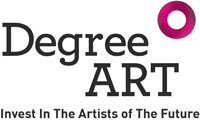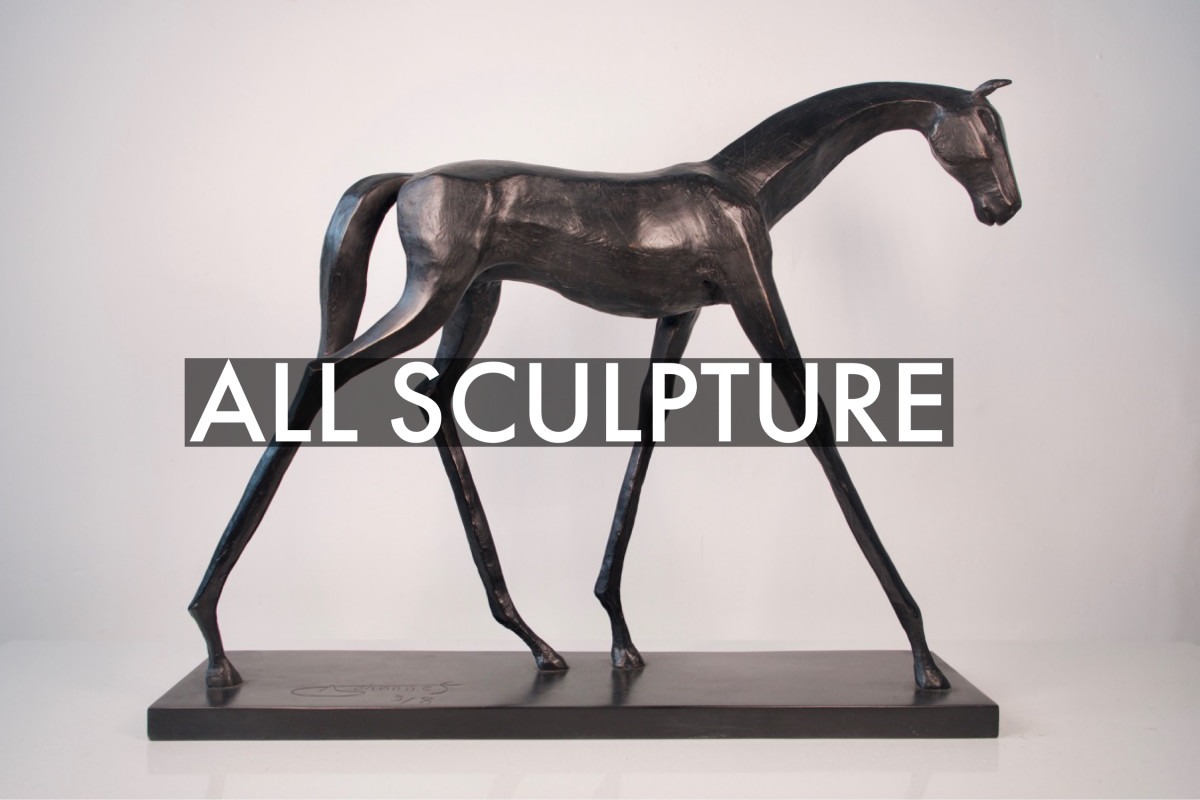Meet the artists that have taken over our Instagram every Thursday in the past month! Showcasing exclusive interviews with Mark Batty, Sophie Derrick, Grant Pham, and Michael Wallner.
MARK BATTY

1) Walk me through a typical day in the studio for you?
MB: I normally work through any admin, reading or research in the morning. I never paint first thing. Whenever I have, it hasn’t gone very well for some reason. In the afternoon I’ll paint, normally while listening to podcasts. I’m usually working on 5-10 paintings at once so will move between pieces a lot. I always have a daily ‘to do’ list, I like the satisfaction of ticking things off!
2) What is something viewers might not know about your work?
MB: I often grind my own paint from materials relating to the planets or moons I’m depicting eg. For paintings of Mars I make paint from a rock called Hematite which is responsible for Mars’ red hue but also common on Earth. Similarly when painting the moon I use anorthosite which was present in samples brought back from the Apollo missions and fairly common across the lunar highlands. I have even tried to make paint from sulfur to depict Io, Jupiter’s volcanic moon, however it didn’t bond with the oil too well and smelled really bad!
3) What is the most challenging part of your process as an artist and what is most rewarding?
MB: Painting with oils for me means lots of layers. I love the initial ‘blocking in’ phases where I can be loose and expressive and work out the placement of things as I go. But often I’ll reach a point about three quarters through where things are unresolved and still a bit messy and I’ll get a bit disheartened with it. I’ve learnt to just walk away for a while when this happens. I turn the canvas against the wall and work on something else. Overcoming this and then finishing a piece is most rewarding, however knowing when a painting is finished is another challenge altogether!
4) Is there any advice you have for artists/creators during this difficult time?
MB: We are in unprecedented times and it’s important not to put too much pressure on yourself. A lot of people seem to have found time to learn new skills and reevaluate their practice, and if you can do that then great, but it's also fine to just ride this out and do whatever you need to do for your own wellbeing. Just ignore the advice telling creatives to consider retraining. And Grayson Perry.
SOPHIE DERRICK
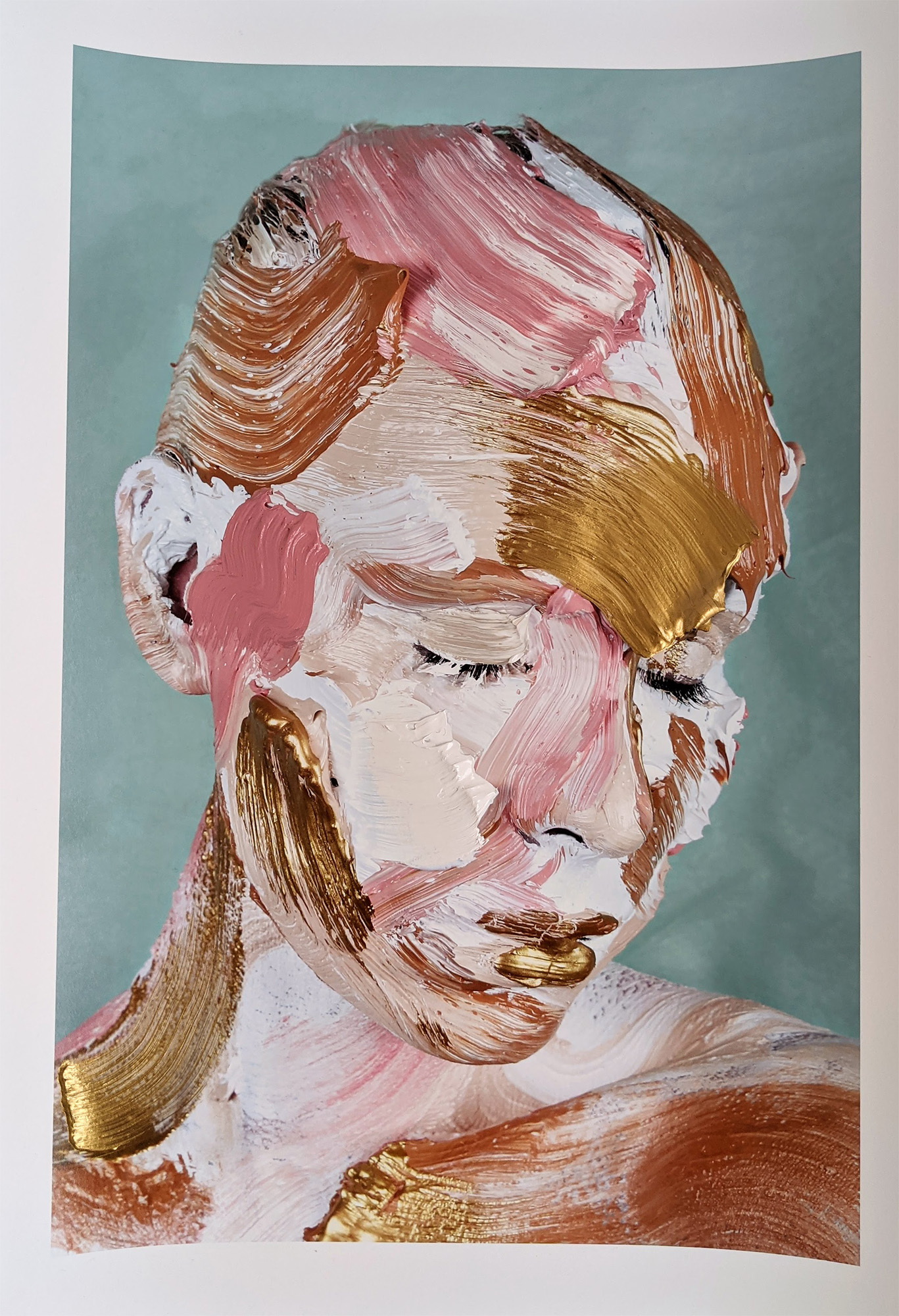
1) Walk me through a typical day in the studio for you?
SD: If it’s a painting day I usually go for a run before I hit the studio, I feel like this clears my mind from all the other life stuff (I have two young children!) Once I’m in the studio I always put on a podcast, and then spend a bit of time clearing up and prepping the surface of the piece. The longest part of the painting process is mixing the colours up so that they match the print, so I will spend a large part of the day doing that! I can usually finish a painting in a day, and then leave to dry lying down on the floor for a few days. I am always in a mad dash at the end of the day to collect my children from school and childcare, and then once they’re in bed I’m back to it, editing new images or planning.
2) What is something viewers might not know about your work?
SD: I don’t think anyone has ever seen me during the painting onto myself process. I have to be alone to get into the zone. I have recently filmed myself during this process and I feel happy to share that, I just couldn’t have anyone there in the same room watching me do it. I think it does link back to the premise of my work; becoming other, escapism, and loosing yourself. You can’t do that unless you’re alone, without anyone there to anchor you.
3) What is the most challenging part of your process as an artist and what is most rewarding?
SD: I have two quite different part of my practice; painting and the more digital editing part.The painting parts of my process are where I feel more natural and confident, but the more design and technological side of things, where I am photographing, editing images and designing installations etc is definitely more challenging for me. I am not naturally good with technology, and although I think I can take a good photograph, I still really don’t understand cameras! However, I think because I find this challenging, it is then very rewarding when the final outcome looks good.I recently had to master SketchUp to create an installation model and that felt very rewarding! The most rewarding part of my process though, is when all the stages are complete; paint self, photograph, edit images, print, paint over. It is a real sense of achievement when the piece is in the studio finished, and even more amazing if someone wants to own it.
4) Is there any advice you have for artists/creators during this difficult time?
SD: It is so difficult and worrying, especially if art fairs and exhibitions are your main source of income. I feel like life has been completely shaken up this year, and it's ok if it has shaken up your work in a good way too! I think people are feeling a bit guilty if things have been going well for them during the pandemic, or if they are feeling even more creative than usual, but they shouldn’t. Art is joy, and I think it’s a good thing for the world if a bit more joy is created at the moment. I think we all just need to keep on going, and if you have some time and some new ideas, that’s great and you should go for it.
GRANT PHAM
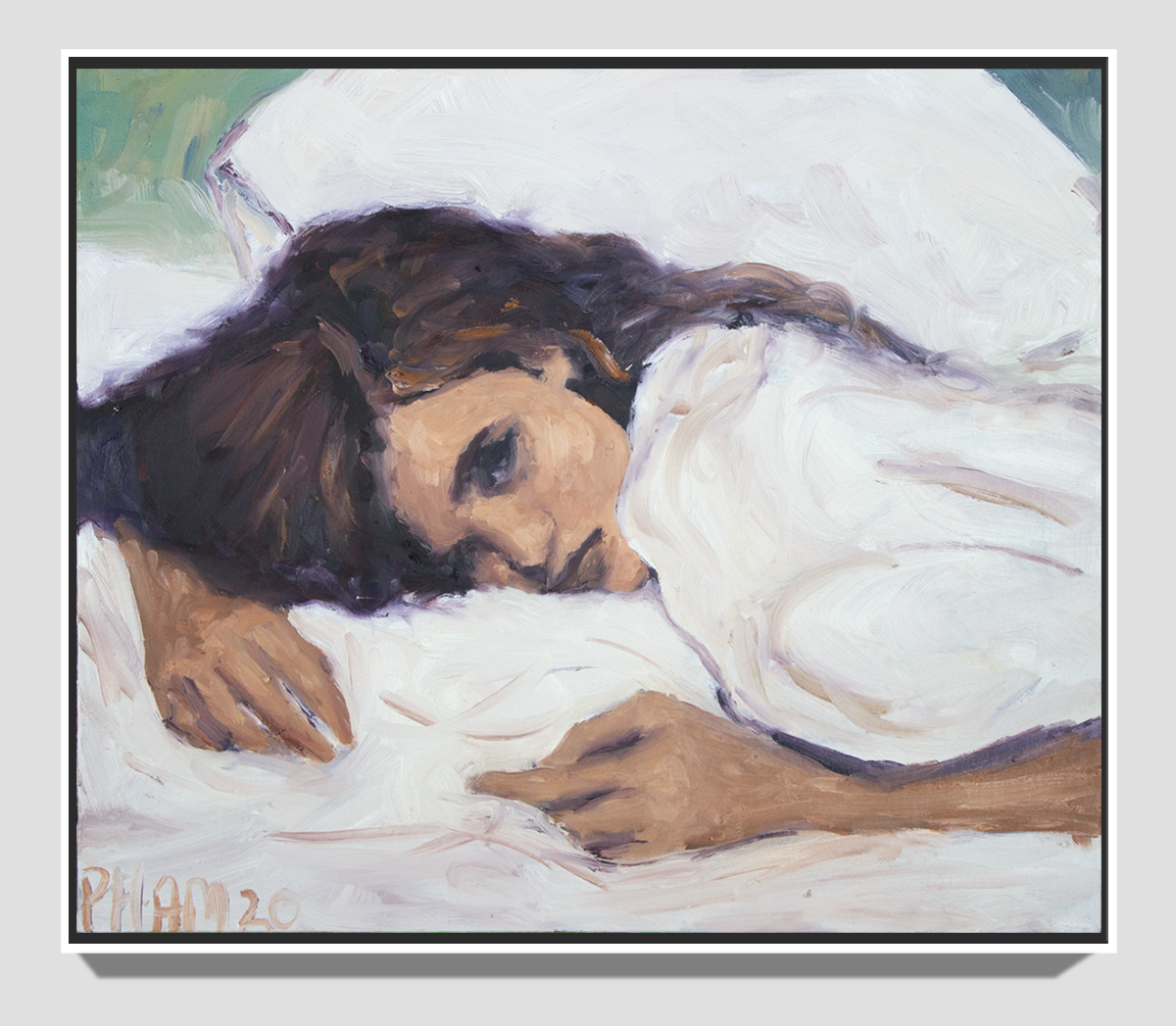
1) Walk me through a typical day in the studio for you?
GP: Paint all over the place and newly ruined sets of clothes is commonplace of what happens in my studio. The place is always a mess but I've found that it helps me loosen up my paintings by not giving much care about anything else except for what goes onto the canvas. Aside from painting I always make time for cutting wood for framing or stretching new pieces.
2) What is something viewers might not know about your work?
GP: My most memorable and favourite pieces are often the ones that I have completed within a single sitting. This doesn't mean it was completed overnight but over many nights of failed execution that I would eventually wipe away completely to start over and try again the next day.
3) What is the most challenging part of your process as an artist and what is most rewarding?
GP: Dealing with the relationship with oil paint- it really is a love-hate relationship knowing that the paint can stay wet for days but can also easily be wiped clean with a splash of mineral spirits. It makes painting for someone as indecisive as myself very hard to know when I am 'finished' with a piece.
4) Is there any advice you have for artists/creators during this difficult time?
GP: During a pandemic it's easy to get distracted- but to just keep making art that's out of your comfort zone is my advice for any artist. I've recently been painting abstract pieces which I mainly make for myself as an escape from the normal routine. It’s fresh and fun and it's something I don't think I would have gotten into had there not been a pandemic.
MICHAEL WALLNER
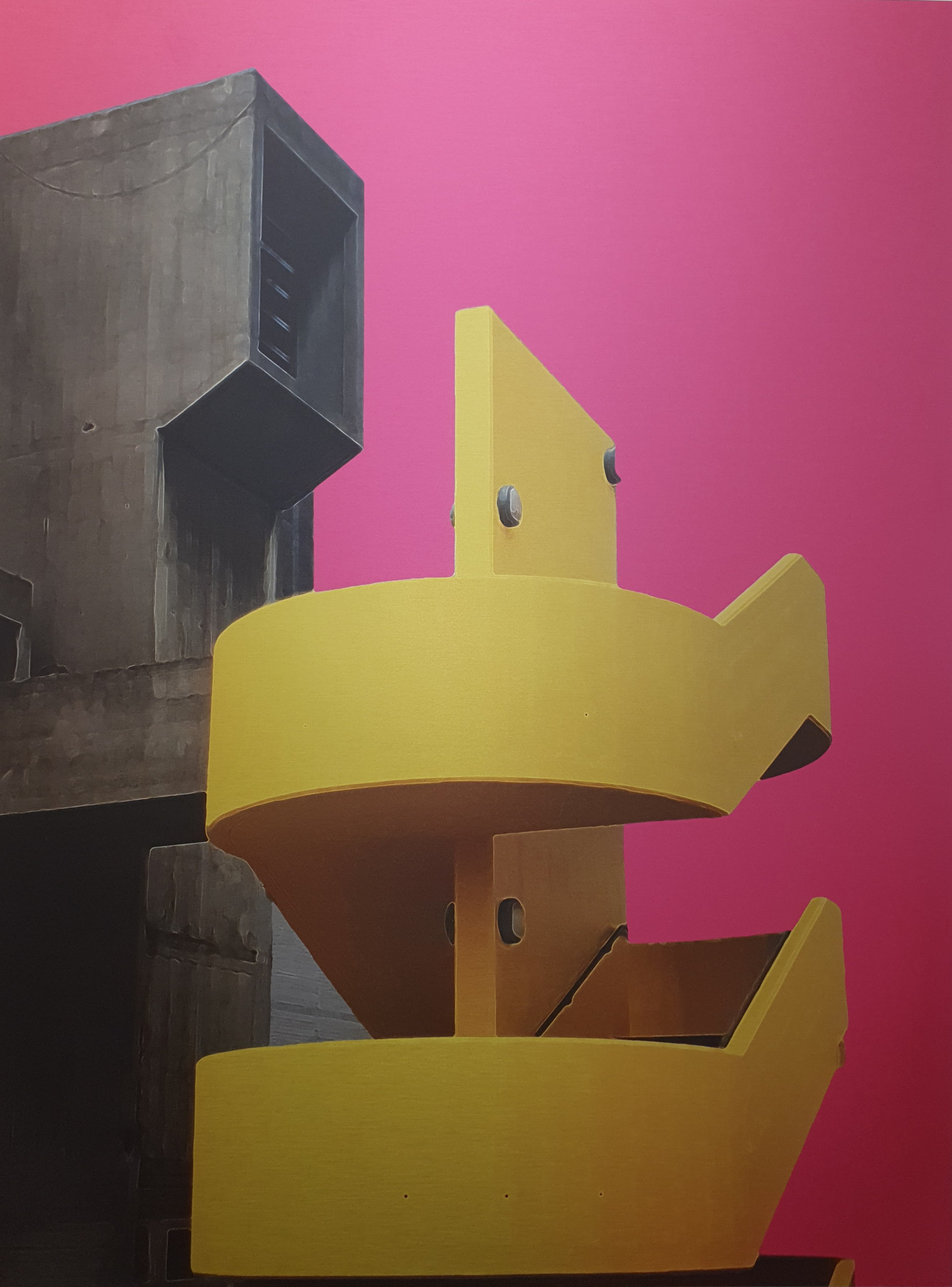
1) Walk me through a typical day in the studio for you?
MW: There is no typical day, which is one of the many things I love about being an artist. My favourite day would include a few hours wandering round London, searching for inspiration for new work: views I hadn’t noticed before, new shapes and angles of London’s architecture. A really good day would include a trip to the top of a tall building or hill to get a bird’s eye view of the city. A hot chocolate (perhaps with a dash of amaretto in winter) sets me on my way in my studio. After uploading my new pictures and selecting the best ones to experiment with I’ll get cracking designing and colouring the images on my giant Wacom tablet. The tablet allows me to colour directly onto the screen so I can colour minute details accurately, which is crucial because if I miss a bit and then print the image onto a huge piece of aluminium it’s not good! A day in the studio usually involves a bit of tidying up, or moving things from one place to another in my case.
2) What is something viewers might not know about your work?
MW: One thing people might not know about my work is that almost all of them are created from my own photographs. If I can, I like to be in the process from start to finish. That means searching for unusual views is very important - something to give the viewer an original angle. I’ve taken many helicopter rides with the doors off which offer the best way to see the patterns and colours of a city. You can’t beat an aerial view! If you’re planning a flight with the doors off my tip would be to make sure you tie your shoe laces properly! It’s a little stressful when they come undone when you’re flying over the city - and that’s not good for your focus!
3) What is the most challenging part of your process as an artist and what is most rewarding?
MW: The most challenging part of my process is finding new ways of presenting my work. There are millions of photos of London and other cities but I look for original and ambitious ways of showing my view of the urban landscape. That might be the view (tall buildings or helicopters), different angles (lying on the floor in a puddle), vivid colour palettes or unusual materials. Being able to travel is crucial to my research. One of the most rewarding challenges is the search for new materials to use in my art. I’ve loved working with brushed aluminum, copper, brass, vintage windows, acrylic,reclaimed wood, gold mirrors and even a 1960s telephone box (watch this space). My newest pieces, based on the river Thames, uses pewter, L.E.Ds, motors and silicone liquid to create a real-life flowing river.
4) Is there any advice you have for artists/creators during this difficult time?
MW: Create. Create. Create. It doesn’t always have to be great. The very process of creating keeps the mind stimulated which will help the ideas to keep on flowing. Do lots of different projects to fend off stagnation. And use the time to get organised - stock lists, ideas for the future, mailing lists, ideas for future gallery collaborations, learn new technology. But above all hang in there - keep your head to the ground, don’t get overwhelmed with what you cannot do. What CAN you do? Life will get back to normal eventually and hopefully we will be able to put positive things we have learnt in lockdown into our practice. Roll on 2021!
